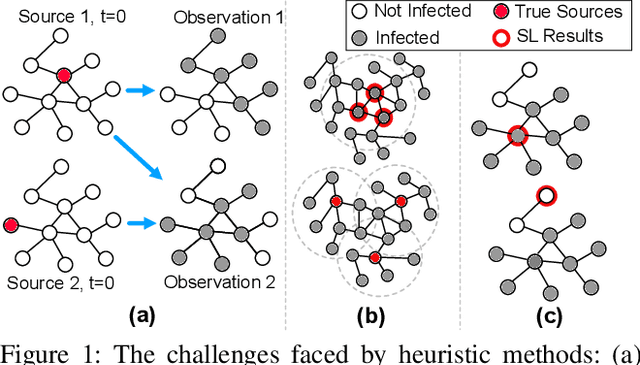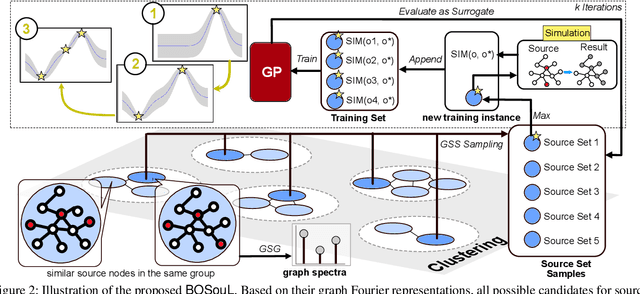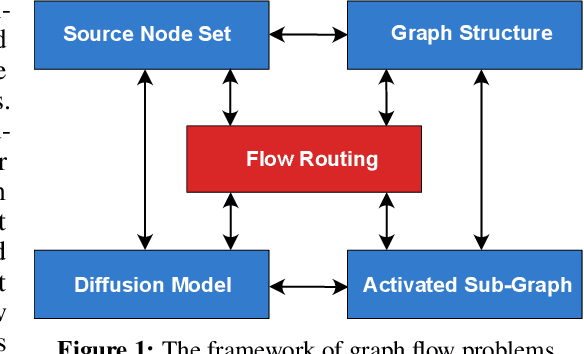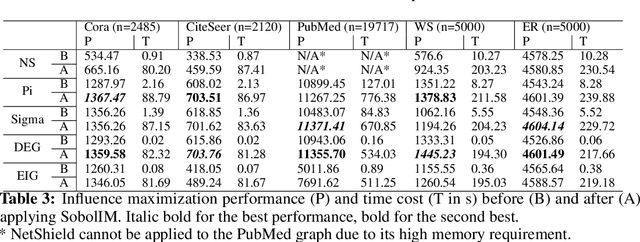Zonghan Zhang
Multiple-Source Localization from a Single-Snapshot Observation Using Graph Bayesian Optimization
Mar 25, 2024



Abstract:Due to the significance of its various applications, source localization has garnered considerable attention as one of the most important means to confront diffusion hazards. Multi-source localization from a single-snapshot observation is especially relevant due to its prevalence. However, the inherent complexities of this problem, such as limited information, interactions among sources, and dependence on diffusion models, pose challenges to resolution. Current methods typically utilize heuristics and greedy selection, and they are usually bonded with one diffusion model. Consequently, their effectiveness is constrained. To address these limitations, we propose a simulation-based method termed BOSouL. Bayesian optimization (BO) is adopted to approximate the results for its sample efficiency. A surrogate function models uncertainty from the limited information. It takes sets of nodes as the input instead of individual nodes. BOSouL can incorporate any diffusion model in the data acquisition process through simulations. Empirical studies demonstrate that its performance is robust across graph structures and diffusion models. The code is available at https://github.com/XGraph-Team/BOSouL.
XFlow: Benchmarking Flow Behaviors over Graphs
Aug 07, 2023



Abstract:The occurrence of diffusion on a graph is a prevalent and significant phenomenon, as evidenced by the spread of rumors, influenza-like viruses, smart grid failures, and similar events. Comprehending the behaviors of flow is a formidable task, due to the intricate interplay between the distribution of seeds that initiate flow propagation, the propagation model, and the topology of the graph. The study of networks encompasses a diverse range of academic disciplines, including mathematics, physics, social science, and computer science. This interdisciplinary nature of network research is characterized by a high degree of specialization and compartmentalization, and the cooperation facilitated by them is inadequate. From a machine learning standpoint, there is a deficiency in a cohesive platform for assessing algorithms across various domains. One of the primary obstacles to current research in this field is the absence of a comprehensive curated benchmark suite to study the flow behaviors under network scenarios. To address this disparity, we propose the implementation of a novel benchmark suite that encompasses a variety of tasks, baseline models, graph datasets, and evaluation tools. In addition, we present a comprehensive analytical framework that offers a generalized approach to numerous flow-related tasks across diverse domains, serving as a blueprint and roadmap. Drawing upon the outcomes of our empirical investigation, we analyze the advantages and disadvantages of current foundational models, and we underscore potential avenues for further study. The datasets, code, and baseline models have been made available for the public at: https://github.com/XGraphing/XFlow
Explain Influence Maximization with Sobol Indices
Jul 16, 2022



Abstract:Due to its vast application on online social networks, Influence Maximization (IM) has garnered considerable attention over the last couple of decades. Current IM research lacks human-comprehensible explanations of how the seed set results in the influence effect, hence reducing the trustworthiness of existing solutions despite their applicability. Due to the intricacy of IM, the majority of current research concentrate on estimating first-order spreading power and often is regard the interplay between flows dispersed from different seeds. This study uses Sobol indices, the cornerstone of variance-based sensitivity analysis, to decompose the influence effect to individual seeds and their interactions. The Sobol indices are tailored for IM contexts by modeling the seed selection as binary variables. This explanation method is universally applicable to all network types, IM techniques, and diffusion models. Based on the explanation method, a general framework dubbed SobolIM is proposed to improve the performance of current IM studies by over-selecting nodes followed by an elimination strategy. Experiments on synthetic and real-world graphs demonstrate that the explanation of the impact effect can dependably identify the key high-order interaction between seeds across a variety of networks and IM methods. SobolIM is empirically proved to be superior on effectiveness and competitive on efficiency.
 Add to Chrome
Add to Chrome Add to Firefox
Add to Firefox Add to Edge
Add to Edge